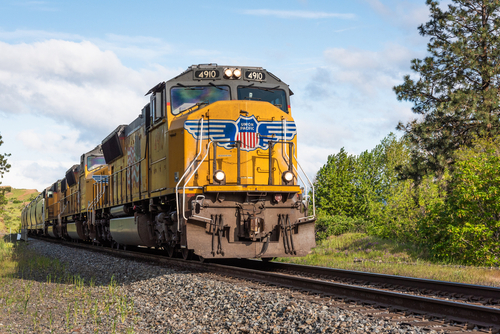
On Thursday, Union Pacific announced it had reached a historic deal with Pittsburgh-based Wabtec Corporation to modernize the railroad.
The deal feature 600 locomotive modernizations featuring a suite of digital solutions and innovations. Worth more than $1 billion, the agreement is the largest investment in locomotive modernization in rail history.
“Union Pacific is taking thoughtful, deliberate steps to reduce our environmental impact and to help our partners improve theirs,” Union Pacific Chairman, President and CEO Lance Fritz said. “Wabtec’s modernization program helps make our existing fleet more fuel efficient, capable and reliable. The resulting increased tractive power enables us to move more freight with fewer locomotives, which improves efficiency and reduces emissions.”
Union Pacific said the modernization efforts were part of its fleet strategy to move more freight efficiently and sustainably across its service territory. The move will help the railroad meet its emission reduction targets. The company aims to reduce greenhouse gas emissions by 26 percent by 2030, on a path to net zero emissions by 2050.
“Modernizations are a game changer for our customers, offering the ability to realize significantly more value out of existing locomotive assets,” Wabtec President and CEO Rafael Santana said. “By customizing these solutions for our customers and installing state-of-the-art technology, we are helping our customers realize outcomes including increased tractive effort, fuel efficiency, reliability, and adhesion, which reduce maintenance, repair, and overhaul expenses. These fleet benefits will support Union Pacific’s sustainable service improvements and long-term growth strategy.”
Wabtec said the modernizations will reduce emissions by approximately 350 tons of carbon per locomotive per year, for a total of more than 210000 tons of annual emission reductions. The reductions are the equivalent, the company said, of removing nearly 45,000 cars from the roads per year.